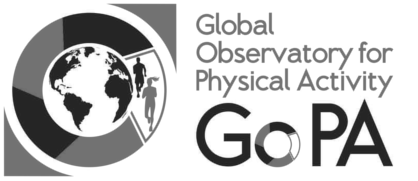Primary
- Help reduce the global prevalence of physical inactivity among adults
- Help reduce the proportions of coronary heart disease, type 2 diabetes, breast cancer, colon cancer, and premature deaths worldwide that are attributable to physical inactivity
- Increase the proportion of peer-reviewed scientific publications on physical activity (levels, trends, correlates, consequences, interventions, and policy) that come from low-income and middle-income countries over the total number of publications by 10%
Secondary
Research
- Increase the number of research studies investigating the association of physical inactivity with the risk of developing non-communicable diseases in low- and middle-income countries.
- Increase the number of studies investigating the association of physical inactivity with the risk of developing other health outcomes in low- and middle-income countries.
- Reduce the proportion of physical activity determinats papers [published research] that uses a cross sectional design, and a corresponding increase in those using a longitudinal [cohort] design.
- Increase the proportion of determinants research reported from low- and middle-income countries compared to high-income countries.
- Increase indexed publications on physical activity interventions in which the study was carried out in a low- and middle-income country.
- Increase indexed publications on physical activity interventions that are based on information and communication technology.
- Increase indexed publications on physical activity interventions based on information and communication technology that come from low- and middle-income countries.
- Increase physical activity intervention papers that have a lead author or any author with a primary affiliation in a low- and middle-income country.
Policy
- Increase the number of countries with a formally adopted and functional plan or strategy to improve physical activity and reduce sedentary behavior patterns.
- Increase at the regional, urban, and town level the proportion of ‘complete streets’ and activity friendly and green environments, inclusive of aesthetic and functional accruements.
- Increase at the regional, urban, and town level community-wide polices and planning that inform and support community-based physical activity programming through reduction in environmental (social/cultural) and structural barriers to active living.
- Increase the frequency of culturally sensitive/context-specific media coverage and promotional material about physical activity among all broadcast and print media.
- Increase at the regional, urban, and town level the number and size of green/open spaces such as parks, recreational spaces, and places for people to meet.
- Increase the proportion of schools with policies that require daily physical education and physical activity.
- Increase the number of countries allocating a budget line item for measuring physical activity prevalence and trends.
- Increase the proportion of communities with transportation plans citing walking and bicycling as priorities.
- Increase the existence of multi-sectoral partnerships steering the implementation of physical activity strategies.
- Increase access to training and infrastructure development of professional working in the field of physical activity and health.
Surveillance
- Help reduce the proportion of adults spending four or more hours per day sitting
- Increase the number of countries with standardized data on physical activity for adult populations
- Improve data availability regarding active transportation and sedentary behaviours, particularly by including standardised measures of these behaviours in surveillance surveys.
- Increase by 50% the number of countries with accelerometry information on population levels of physical activity.
- Increase by 50% the number of countries with continuous surveillance of physical activity practice.

